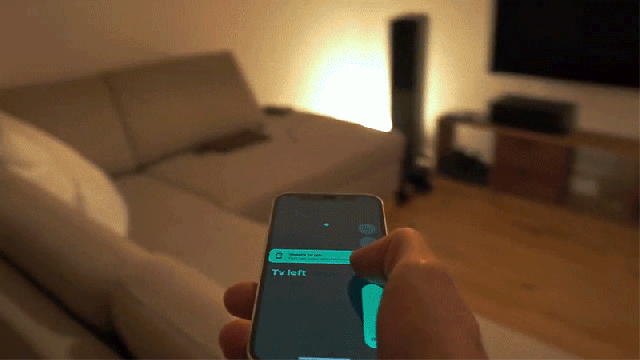One day we’ll have the effortless smart home experience we’ve all been promised, but it’s going to need to be fixed by some talented people who truly understand why the smart home as we know it is broken. Developer Bastian Andelefski just created a simple iOS app that relies on augmented reality and the iPhone’s ultra-wideband U1 chip to make controlling a room full of smart devices a breeze.
Like autonomous cars and the paperless office, the smart home is a tantalising idea that promises to revolutionise how we interact with our homes. But the concept we’ve been promised and how the smart home works today are two entirely different things. We’re getting closer to a time when a house instantly recognises every command you mutter, and every appliance and electrical device can be operated remotely or even run autonomously after learning your likes and dislikes.
That’s not the smart home we have now. Instead of all those smarts being invisible and effortless we have countless mobile apps to jump between, and even more competing standards as companies try to make their smart devices and protocols the industry standard. There’s light at the end of the tunnel as a universal smart home standard called Matter gains traction and more companies agree to make their smart devices all play nicely together, but there’s still plenty of room for improvements and clever ways to streamline smartphone interactivity, as Andelefski demonstrates.
With a custom iOS app called Point, Andelefski leverages both the ultra-wideband U1 chip Apple has included in its smartphones since the iPhone 11 (both the HomePod mini and AirTags have the technology too, but it can’t be used by third parties) as well as augmented reality through Apple’s ARKit platform to create a smart home interface that’s as intuitive as the wireless TV remotes we’ve been using for decades.
Ultra-wideband is another wireless protocol that uses high-frequency radio signals with a short range to accurately locate and communicate with other nearby devices. It offers better performance and more precision than both Bluetooth and GPS. The field-of-view of Apple’s U1 chip in the iPhone is limited, but by combining it with the spatial awareness of augmented reality, Andelefski’s app works similar to the Find My app, so HomeKit-compatible smart home devices like light bulbs show up as on-screen dots that allow the user to simply point at one to take control.
Based on the type of device the iPhone and Point app are pointing at, context-sensitive controls automatically appear on screen. For basic smart bulbs, a simple power button and brightness slider appear, but for pricier colour-changing bulbs, an adjustable colour wheel is added to the mix too. If it was a thermostat, a temperature dial would instead be displayed.
It all works effortlessly and seamlessly in Andelefski’s video, but the app is unfortunately just a prototype that required some expensive ultra-wideband development hardware to make work. The setup doesn’t have to be exclusive to Andelefski’s home, however, and the iOS developer is hoping a hardware maker will reach out to help turn this prototype into an affordable consumer product, but anyone who’s already battled to try and make their home smart would probably be happy to drop a small fortune on this upgrade.
